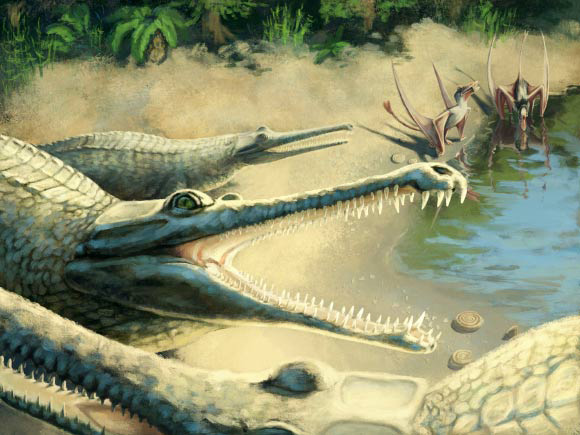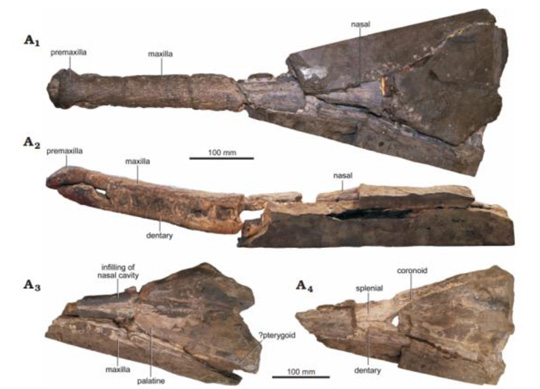Helping to Unravel the Troublesome Teleosauroids
New Fossil Study of Jurassic Crocodile Confirms Identity
Numerous genera of Jurassic and Cretaceous marine crocodiles have been described. However, since many of these genera were erected in the 18th and 19th centuries, sometimes these fossil remains have to be revisited as new discoveries provide additional information. Take the case of Mystriosaurus laurillardi, a teleosauroid known from fossils found in Germany and in the United Kingdom. The taxonomy of the teleosauroids has been blighted by the problems associated with Steneosaurus bollensis.
Specimens have been “lumped” into this species only to be subsequently reassigned. A new study, published in the journal Acta Palaeontologica Polonica demonstrates that Mystriosaurus is a distinct species.
A Life Reconstruction of Mystriosaurus laurillardi
Picture credit: Julia Beier
Mystriosaurus laurillardi a Marine Predator
M. laurillardi grew to about four metres in length. The long and narrow jaws and the teeth associated with this marine predator suggest that it fed primarily on fish (piscivore). It lived 180 million years ago (Toarcian faunal stage of the Early Jurassic). A fossil skull found in southern Germany in the 1770s had previously been described as Steneosaurus bollensis, a contemporaneous member of the Teleosauridae, but in this new assessment of the cranial material, the researchers led by scientists from the Naturkunde-Museum Bielefeld (Germany) and scientists from Edinburgh University, concluded that the skull represented M. laurillardi.
The research team also announced that another crocodilian skull found in Yorkshire (Mulgrave Shale Member, Whitby Mudstone Formation), should also be assigned to Mystriosaurus laurillardi.
The Holotype Cranial Material of M. laurillardi from southern Germany
Picture credit: Acta Palaeontologica Polonica, Sachs et al.
Sorting Out Steneosaurus brevior
Previously, the crocodilian skull from Yorkshire had been named Steneosaurus brevior, the scientists suggest that this name is now a junior synonym of Mystriosaurus laurillardi. Intriguingly, a phylogenetic assessment indicates that Mystriosaurus was closely related to Steneosaurus, but it is probably more closely related to a Chinese teleosauroid (previously known as Peipehsuchus), than any European form.
For models and replicas of prehistoric animals: Everything Dinosaur.



